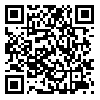Volume 6, Issue 1 (Spring 2009)
bloodj 2009, 6(1): 1-11 |
Back to browse issues page
Download citation:
BibTeX | RIS | EndNote | Medlars | ProCite | Reference Manager | RefWorks
Send citation to:



BibTeX | RIS | EndNote | Medlars | ProCite | Reference Manager | RefWorks
Send citation to:
Habibi Roudkenar M, Halabian R, Shagerdi Esmaili N, Oodi A, Masroori N, Amirizadeh N, et al . Isolation, cloning and expression of recombinant . bloodj 2009; 6 (1) :1-11
URL: http://bloodjournal.ir/article-1-297-en.html
URL: http://bloodjournal.ir/article-1-297-en.html
Mehryar Habibi Roudkenar * 
 , R Halabian
, R Halabian 
 , N Shagerdi Esmaili
, N Shagerdi Esmaili 
 , A Oodi
, A Oodi 
 , N Masroori
, N Masroori 
 , N Amirizadeh
, N Amirizadeh 
 , K Mousavi Hosseini
, K Mousavi Hosseini 
 , A Gharehbaghian
, A Gharehbaghian 
 , H Rezvan
, H Rezvan 
 , M.A Jalili
, M.A Jalili 


 , R Halabian
, R Halabian 
 , N Shagerdi Esmaili
, N Shagerdi Esmaili 
 , A Oodi
, A Oodi 
 , N Masroori
, N Masroori 
 , N Amirizadeh
, N Amirizadeh 
 , K Mousavi Hosseini
, K Mousavi Hosseini 
 , A Gharehbaghian
, A Gharehbaghian 
 , H Rezvan
, H Rezvan 
 , M.A Jalili
, M.A Jalili 

Abstract: (22860 Views)
Isolation, cloning and expression of recombinant
human factor VII in CHO cell line
Halabian R.1( MS ), Shagerdi Esmaili N.1( MS ), Oodi A.1( MS ), Masroori N.1(MS), Amirizadeh N.1(PhD), Mousavi Hosseini K.1(PhD), Gharehbaghian A.1(PhD), Rezvan H.1(PhD), Jalili M.A.1(PhD),
Habibi Rudkenar M.1(PhD)
1Iranian Blood Transfusion Organization, Research Center, Tehran, Iran
Abstract
Background and Objectives
Factor VII is a plasma glycoprotein that participates in the coagulation process leading to the generation of fibrin. Factor VII plays an important role in the cascade of coagulation. The aim of this study was to clone and express human recombinant factor VII in CHO cell line as an eukaryotic host cell.
Materials and Methods
In this descriptive study, FVII cDNA was isolated from HepG2 cell line and cloned to pcDNA 30.1(+) vector. The constructs were transfected to CHO cell line. A cell line that permanently expressed recombinant factor VII was established. The expression of recombinant FVII was determined by RT-PCR, ELISA, SDS-PAGE and western blot analysis. Biological activity of recombinant factor VII was determined by prothrombin time assay in factor FVII-depleted plasma.
Results
The results showed that FVII was successfully cloned and expressed. After 3 weeks stable cell lines were generated in the culture of the CHO cell line in the presence of geneticin. RT-PCR, ELISA, SDS-PAGE and western blot analysis results indicate the expression of FVII in the stable clones. A three- to four-fold decrease of the specific coagulant activity of rFVII was observed that indicates of rFVII being biologically active.
Conclusions
Four thousands to Six thousands vials of rFVII were imported to our country having high cost for the government. Therefore, production of rFVII through recombinant DNA technology within lab scale is the first step to overcome the problems.
Key words: Hemophilia, rFVIIa, CHO, Transfection
SJIBTO 2009 6(1): 1-11
Received: 21 Oct 2008
Accepted:21 May 2009
Correspondence: Habibi Roudkenar M., PhD of Biotechnology. Assistant professor of Iranian Blood Transfusion Organization-Research Center. P.O.Box: 14665-1157, Tehran, Iran. Tel: (+9821)88601599 Fax: (+9821)88601599
E-mail: roudkenar@ibto.ir
Type of Study: Research |
Subject:
Hematology
Send email to the article author
| Rights and permissions | |
 |
This work is licensed under a Creative Commons Attribution-NonCommercial 4.0 International License. |



